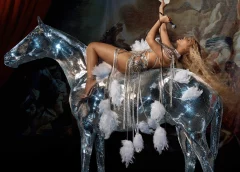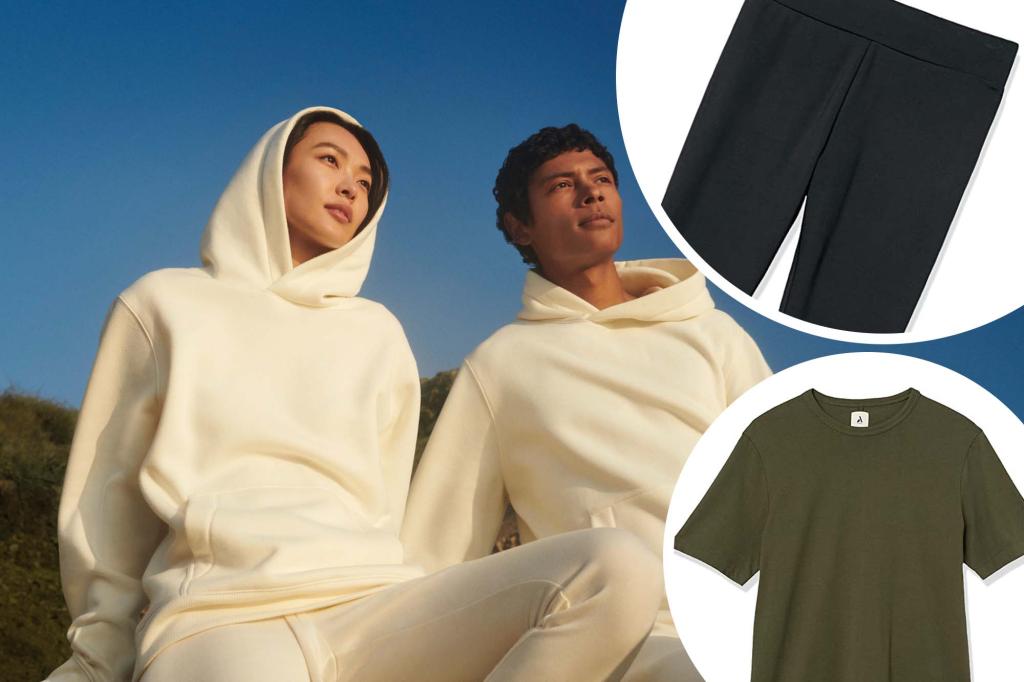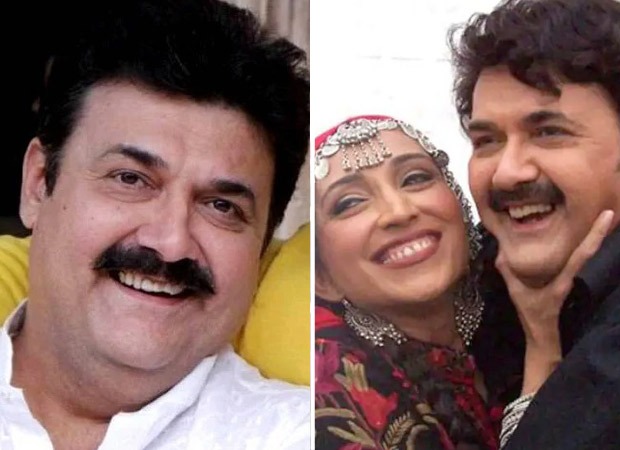
Beyoncé’s look book of fashion’s exhaustingly fabulous era
[ad_1]
Photographs on her social media aim to evoke those emotions in concrete terms — in the form of bodysuits, disco balls, hologram horses and bedazzled saddles. If the music is an homage to uninhibited movement, the still images are steeped in fashion history, high-maintenance glamour and perfectionism — perhaps not the old-school version that Beyoncé eschews in her missive but a demanding rigor nonetheless.
There’s a lot of work in these looks.
To begin: There are bodysuits. But of course there are bodysuits. Has there ever been an extended Beyoncé moment that didn’t feature one? No, there has not. They are her signature. Her uniform. They should be renamed Bey-suits.
There are spangled ones and molded ones and one that is really just a bit of silver chain and rhinestones. In one portrait, she sits with her legs akimbo in a black lace Alaïa bodysuit with her gaze directed at the viewer and her lips slightly parted. This, too, is a signature. In virtually every photograph, she’s staring at her audience with her mouth slightly ajar. This default expression lends each photo a similar emotional tone.
Beyoncé in still images is not nearly as interesting as Beyoncé in motion. Her silence does not speak volumes. She doesn’t communicate that much in a glance that’s caught in the click of a shutter. It doesn’t matter whether she’s holding a broken bottle as if she’s fending off an unruly bar mate or hoisting an old-fashioned glass as if she’s signaling a waiter to freshen her drink. She’s giving the Beyoncé look. But no matter. That has always been more than enough.
There’s more Alaïa on display in the form of a custom acid-green lace dress with Mongolian lamb trim. There’s a Gucci silver satin velvet gown with winged sleeves and a red puffy cropped jacket from Dolce & Gabbana, too. There are western hats and red-soled stilettos, corsets and a silver horned bustier from Mugler that calls to mind the entirety of 1992′s “Too Funky” video on which designer Thierry Mugler collaborated with George Michael, which might well be one of the seven summits of fashion and music collaborations.
The clothes, with their broad shoulder and slinky lines and unabashed sexual provocation, recall the 1970s to the early 1990s, when fashion swerved from a kind of foreboding sexuality to giddy ostentation. The clothing sends the mind reeling to the shrewd confidence of Grace Jones and the sexual titillation of Madonna. The intense glamour conjures drag balls and drag queens. The posture makes one think of the fashion photography of Helmut Newton and Jean-Paul Goude.
Beyoncé posing on her knees with a gilded saddle on her back echoes Newton’s “Saddle I.” The image of her in the silver Gucci dress with one breast nearly exposed calls to mind his portrait of Paloma Picasso wearing a breast-revealing dress by Karl Lagerfeld. And there is a disco horse. Beyoncé sits atop it wearing chains and spikes and wielding a white hat; it calls to mind the pop culture moment from 1978 when Bianca Jagger rode a white horse into Studio 54 and helped cement the night club’s reputation as the era’s not any more location for decadence and debauchery.
There’s a full commitment to the glimmering joy of that period — or at least the soft-focused memory of it. Back then, the pleasure bubbled up despite — and perhaps because of — dire circumstances. The dancing endured in the face of the AIDS epidemic, homophobia, economic peril and dire crime statistics. There was a lot to fear. And so, after a pandemic lockdown, civil unrest and an attempted insurrection, Beyoncé offers fizzy, blissful music. And after years of track pants and yoga pants and dressing only from the waist up, she also presents her audience with fashion that is turned out, spit polished, cinched up and exhausting. She is working hard in those corsets and stilettos.
It would be politically correct to argue that she’s putting on a display of strength and female empowerment with her pasties and seamed stockings. After all, Beyoncé has schooled the culture and the music industry on what it means to embrace one’s success and power. Her lessons have especially resonated among some Black women. But there’s no denying that these pictures also express a delight in the male gaze — as well as the female gaze, the non-gendered gaze and the gaze of anyone who’d like to look.
The clothes tell the chaotic story of an era in pop culture when people were determined to have a good time. And when they did have a good time. Despite it all.
[ad_2]
Source link


